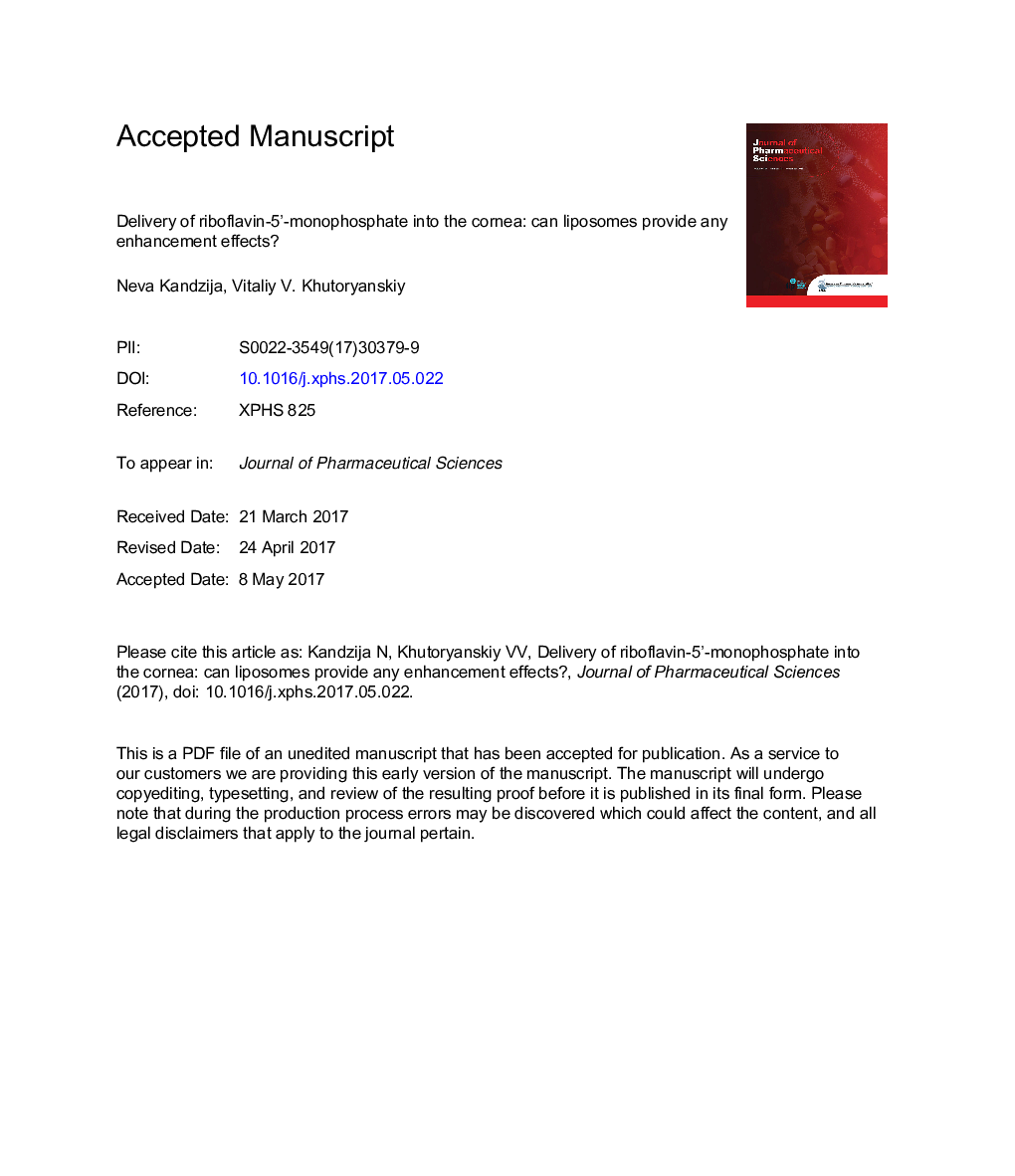| Article ID | Journal | Published Year | Pages | File Type |
|---|---|---|---|---|
| 8513802 | Journal of Pharmaceutical Sciences | 2017 | 26 Pages |
Abstract
Keratoconus is a progressive condition caused by the thinning of the cornea, which eventually deforms the front surface of the eye into a cone shape leading to ghosting, multiple images, glare, and several other vision problems. Currently, keratoconus is treated with UV-induced riboflavin (Rb)-mediated collagen cross-linking, which requires a physical removal of the corneal epithelium under topical anesthesia. This study reports the penetration of Rb and its more water-soluble form, riboflavin-5â²-monophosphate (RbP), into the bovine cornea ex vivo. Using ex vivo bovine corneal tissues and 0.8 mg/mL drug solutions in phosphate buffer, it was established that RbP penetration into the cornea within 3 h of diffusion experiment was greater (17.3 ± 0.8 μg) compared with Rb (10.4 ± 4.2 μg). In the cornea, RbP was found to convert to Rb, which is mediated with enzymes present in this tissue. Several formulations including the conventional and propylene glycol-containing liposomes with encapsulated RbP have been developed, and their effect on the drug penetration into the bovine cornea was evaluated. Encapsulation of RbP into the liposomes did not provide any statistically significant improvement in the penetration of RbP into the cornea.
Related Topics
Health Sciences
Pharmacology, Toxicology and Pharmaceutical Science
Drug Discovery
Authors
Neva Kandzija, Vitaliy V. Khutoryanskiy,
